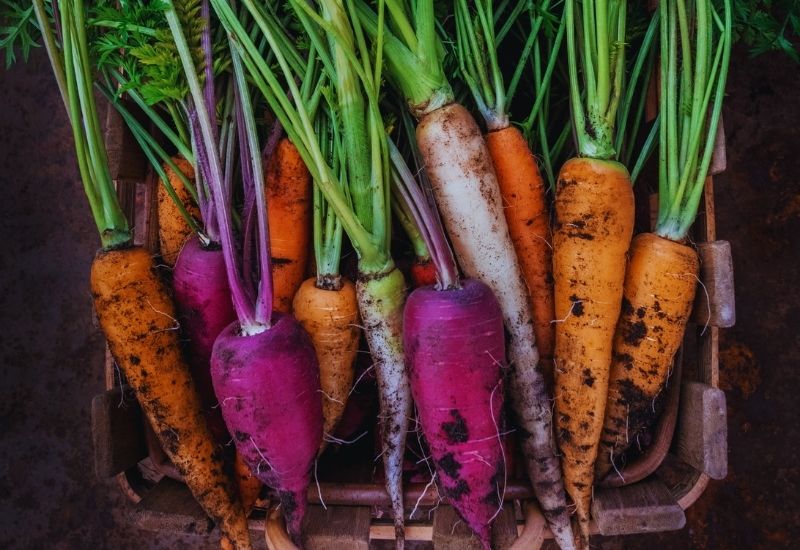
One of the most exciting parts of gardening is flipping through seed catalogues in the winter and finding new vegetables to grow. As you will quickly discover, a carrot is not “just a carrot” but there are numerous varieties to choose from.
There are 5 types of carrots: Nantes, Imperator, Chantenay, Danvers, and Ball or mini carrots, plus many delicious heirloom varieties. Every carrot has different qualities and characteristics to give us a truly unique growing experience.
Some are sweeter than others, some have thinner or fatter roots, and some even grow in different colors, from orange, to purple, or even white!
However, before you plant your carrot seeds this year , it’s important to know which varieties will grow best in your area.
I’ve compiled a list of our favorite types for growing at home gardeners, with helpful tips on how to grow them, harvest them, and store them until use.!
The History Of The Carrot
Today’s carrots are derived from the wild carrots from the Middle East. It is unclear exactly when the edible carrot originated, but some early records suggest its medicinal and culinary use in ancient Egypt and the Persian Empire.
The ancient Greeks and Romans made use of these less tasty varieties medicinally as well, and in the 13th century, carrots were cultivated in Asia and Europe into sweet-tasting roots.
Open Pollinated VS Hybrid (F1)
A carrot seed is either open-pollinated (OP) or a hybrid (F1). Open-pollinated seeds are produced by pollen being shared between two similar carrot varieties. A lot of carrot varieties are hybrids, meaning they are pollinated with other varieties to give them new desirable traits.
Hybridization is not genetic modification, which is a dangerous man-made manipulation performed in a laboratory.
The 5 Types of Carrots
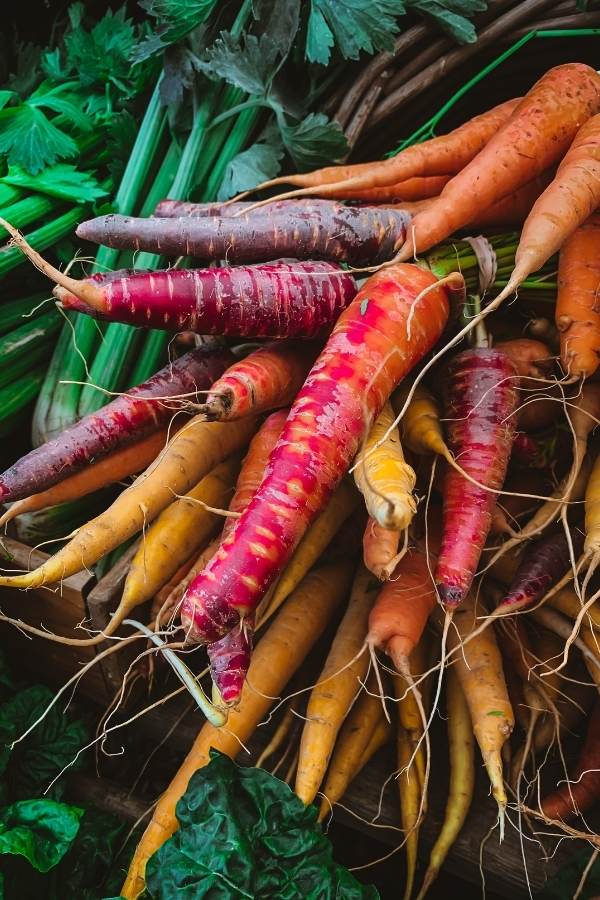
Over the years, there have been 5 main cultivars developed, each having a unique shape and characteristics:
1. Nantes

Over 200 years ago, Nantes carrots were grown on the French coast. Today, they remain popular and the roots are cylindrical and medium-length, with a blunt end and a sweet taste. There are dozens of varieties of Nantes that grow in many conditions, though some can be finicky to grow.
Many farmers who grow Nantes actually import quality seeds from France, but most local seed suppliers also sell very good quality seeds. With over 40 varieties of Nantes to choose from, let’s look at a few of the most popular.
2. Imperator
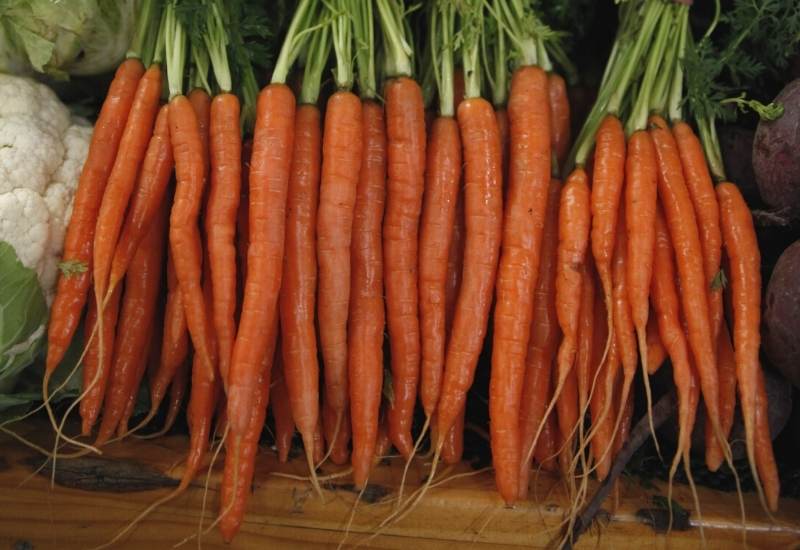
Imperator carrots are the most common type grown by commercial operations as they grow large with a high sugar content, and this is what you usually find on the grocery store shelves.
Typically, they grow well in deep, loose soil and are very sweet. As the tops grow quickly, it is easy to locate them early for easy weeding, and they can be bunched nicely for market.
Imperator carrots are an excellent storage crop. They are edible fresh, boiled, steamed, and roasted.
3. Chantenay
Chantenay are broad and stout and are great for growing in shallow or heavy soils. They are sweet with a nice flavor but make sure to harvest on time or they become woody. They are generally grown for canning but they also store very well.
4. Danvers
Danvers carrots were developed in Massachusetts in the 1800s where they got their name. They are a cliché “carrot” shape, and these easy-to-grow carrots thrive in most growing conditions and have a nice flavor.
5. Ball Or Miniature
All carrots can be picked when they are small, but some varieties have been developed to excel as mini carrots. There are also a number of round varieties that add flair to the garden and the table. Ball or miniature carrots are perfect for container growing, or for gardens with shallow or heavy soil.
20 Popular Carrot Varieties To Grow At Home Garden
There are hundreds of carrot varieties available to the home gardener, but how do you choose which one to grow? Keep reading to learn about the different carrots and which is best suited to your garden.
1. Scarlet Nantes
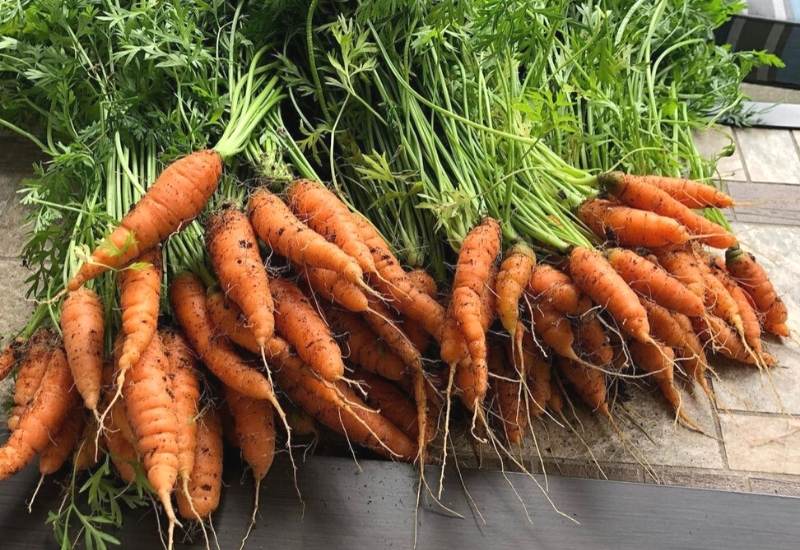
Scarlet Nantes are easy to grow and outperform many other Nantes varieties of carrots. When mature, they are a relatively uniform 18 cm (7″), but they also sweeten up early to be harvested as baby carrots. Scarlet Nantes are good for freezing and store well.
2. Napoli
Napoli carrots are extra-early hybrids that thrive in spring and fall. They are especially suitable for early sowing or late harvest under extended seasons.
They have an excellent shape, texture, and taste, becoming very sweet after fall frosts, and they are often used as “winter carrots” in temperate climates. You can also harvest Napoli as baby carrots.
3. Bolero
Bolero are excellent tasting hybrids that are easy to store and can even overwinter well in the ground in temperature climates. Additionally, they are resistant to powdery mildew and other common carrot ailments. Bolero carrots are bright orange, thick, and heavy.
4. Little Fingers
These are a great baby carrot and have golden-orange skins. They are sweet and have a good texture. Little Fingers are ideally suited for growing in containers and grow well in heavy soil. They are great right out of the garden and are a good size and texture for pickling.
5. White Satin
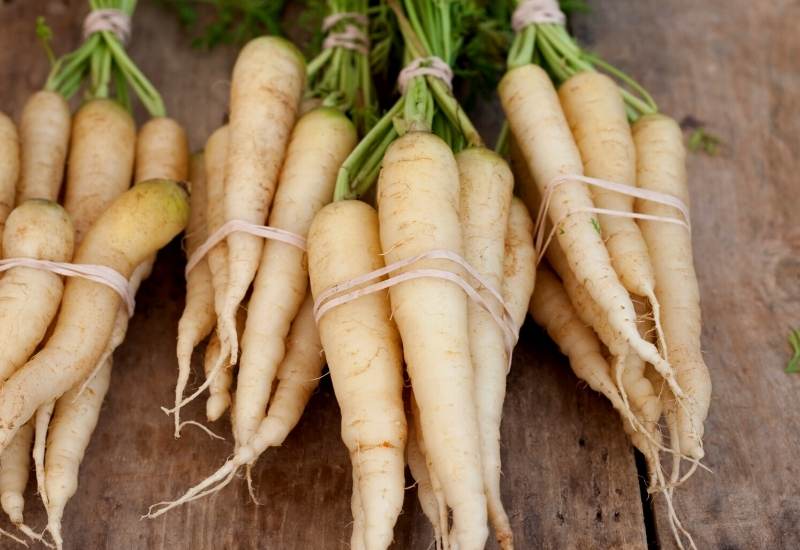
White Satin carrots are really a Nantes/Imperator cross with a Danvers shape. but they are worth mentioning because they are crisp, juicy, and grow well in a variety of conditions. They grow well in most gardens and are juicy and crisp with a good flavor.
6. Sugarsnax 54
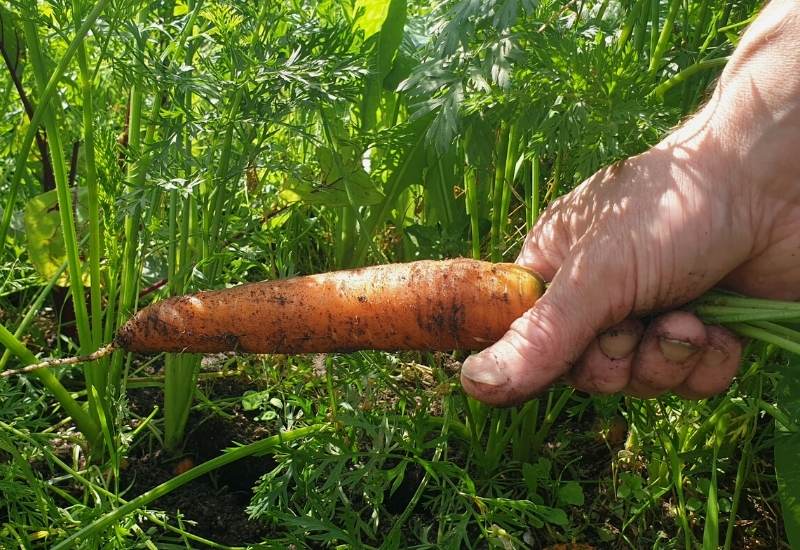
These sweet carrots have straight, uniform roots with a sweet flavor and good texture. Sugarsnax 54 have a nice orange color from lots of beta carotene, and they are quite resistant to many carrot blights.
7. Yellowbunch
These are a yellow carrot that are very sweet. They are very good for fresh eating, and they also retain their beautiful flavor and color after cooking.
8. Viper
Viper carrots are very narrow and long, thin carrots, making them ideal for dense plantings. They are relatively coreless and are very crisp.
9. Royal Chantenay
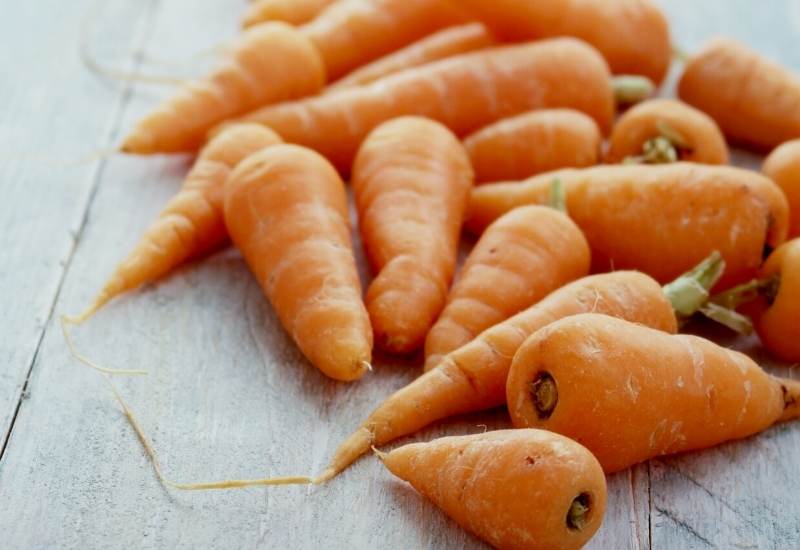
These regally named carrots are a popular juicing carrot, but are also great for canning and freezing. They are very big and broad at maturity but are still very sweet. They are generally very uniform and are attractive to sell at a farmer’s market.
10. Kuroda Nova
Kuroda carrots are often considered a separate type of carrot developed in the east, but many seed companies list them as a variety of Chantenay.
They are great for fresh eating and juicing, and they can also be harvested as baby carrots. Whenever you pick them, Kuroda Nova are a very sweet and tender carrot.
11. Hercules
As impressive as the hero of old, Hercules carrots are a popular variety that stores well and are excellent when eaten fresh. They have a nice flavor, color, and symmetrical cone shape.
12. Dragon carrots
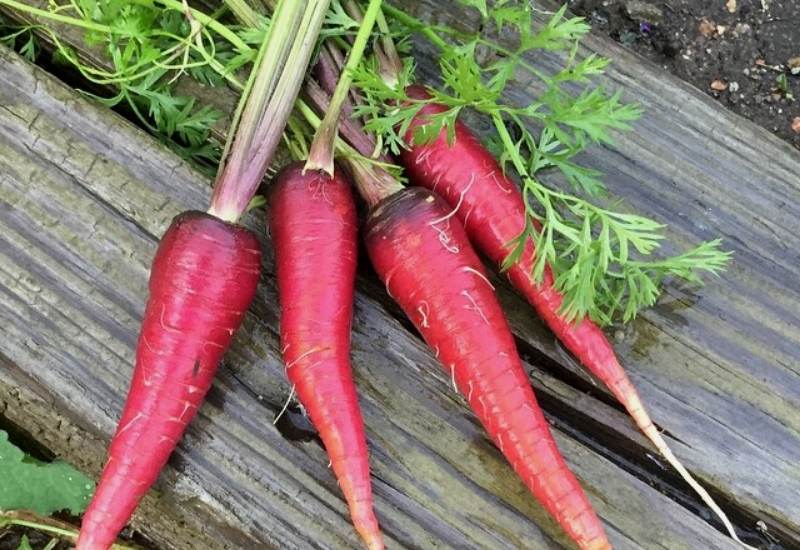
Dragon carrots have purple skin with orange insides and have a satisfying crunch and flavourful. They are best eaten fresh because the purple color fades to orange when they are cooked (but the flavor stays the same).
13. Danvers 126
This variety is probably the sweetest Danvers available. They are heat tolerant yet also overwinter in temperate climates. They also store really well and are a good-all-around carrot.
14. Danvers Half-Long
These are very similar to Danvers 126, except the half-long matures even faster (hence the name). They have a nice shape, and an even better texture and taste.
15. Paris Market
Also called Paisian Market, these look like orange radishes but are very sweet little carrots. They can be added whole to stews or soups, and they are also great fresh or boiled.
16. Babette
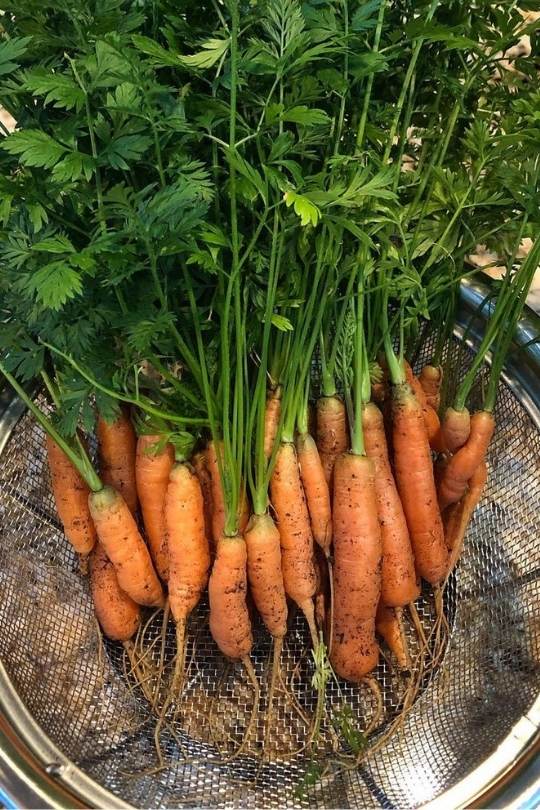
Babette carrots were cultivated in France and can be grown to a full-sized carrot but they are one of the most delicious baby carrots when harvested early.
17. Short ‘n Sweet
As the name implies, these are a very sweet baby carrot. Short ‘n Sweet are a variety of Chantenay that are harvested as small carrots with a good flavor. They are easy to grow and do really well in poor soils.
18. Manpukuji
Manpukuji carrots can grow to a remarkable size and have been around for over 400 years. Manpukuji carrots need very deep soil (raised beds work great), and they will even reach an impressive size in short-season climates.
19. Black Nebula
Black Nebula carrots are one of the darkest carrots on the market, with their purple colour permeating to the core. Unlike many dark carrots, the Black Nebula also keep their colour when they are cooked.
They have a very good flavor and are a vitamin-rich variety. The juice is great for drinking and can even be used as a natural dye.
20. Longue Rouge Sang
Another Frech cultivar, Longue Rouge Sang carrots are stunning to look at, and the taste is just as good. They are easy to grow and thrive in many different gardens.
Conclusion
With so many different kinds of carrots to choose from, it is hard to know where to start. Or maybe you are a seasoned carrot grower and want to try something new in your garden. I hope this article will help you choose your next gardening adventure.

Written By
Amber Noyes
Amber Noyes was born and raised in a suburban California town, San Mateo. She holds a master’s degree in horticulture from the University of California as well as a BS in Biology from the University of San Francisco. With experience working on an organic farm, water conservation research, farmers’ markets, and plant nursery, she understands what makes plants thrive and how we can better understand the connection between microclimate and plant health. When she’s not on the land, Amber loves informing people of new ideas/things related to gardening, especially organic gardening, houseplants, and growing plants in a small space.

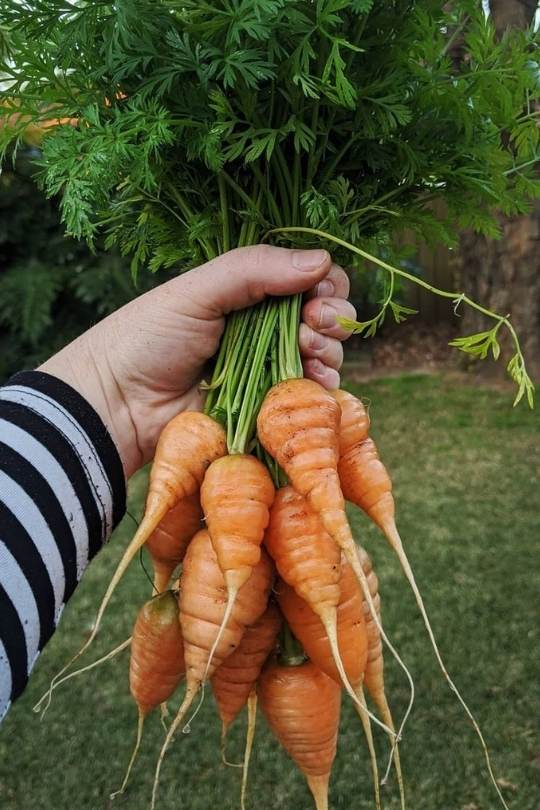

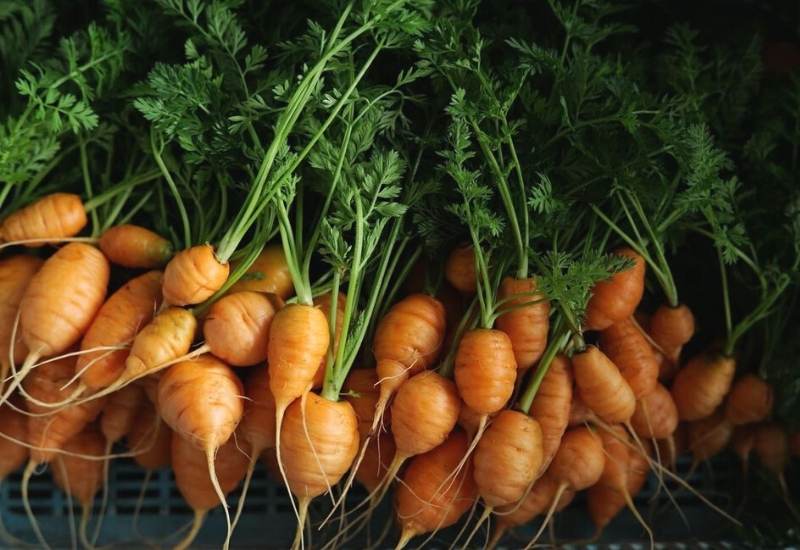
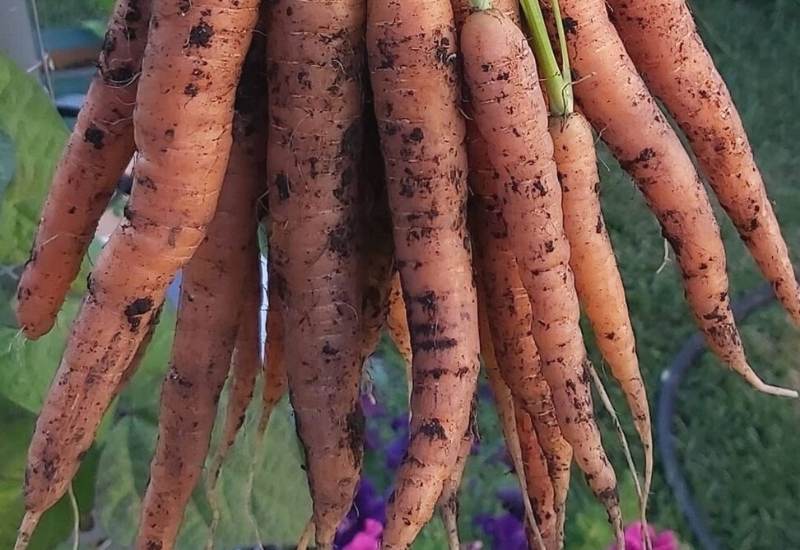
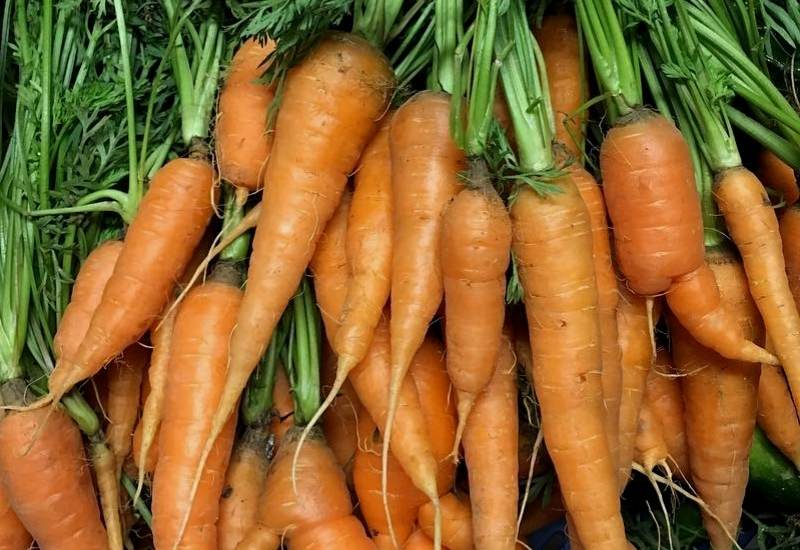
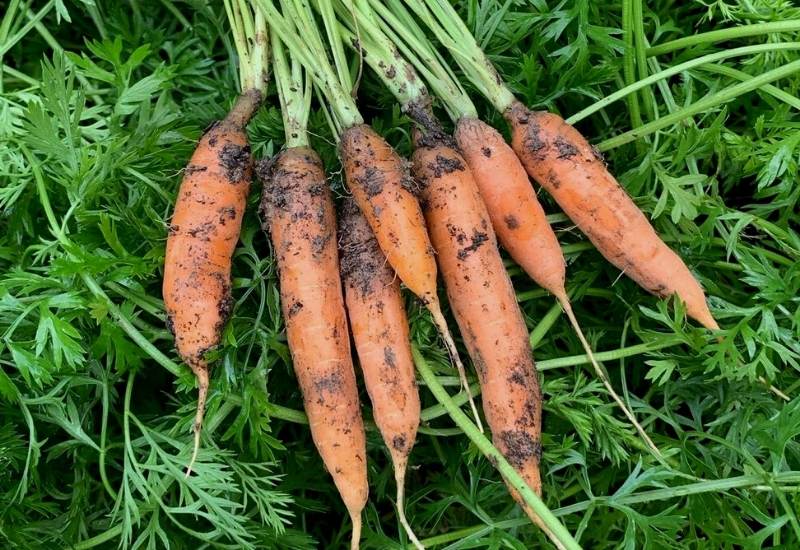


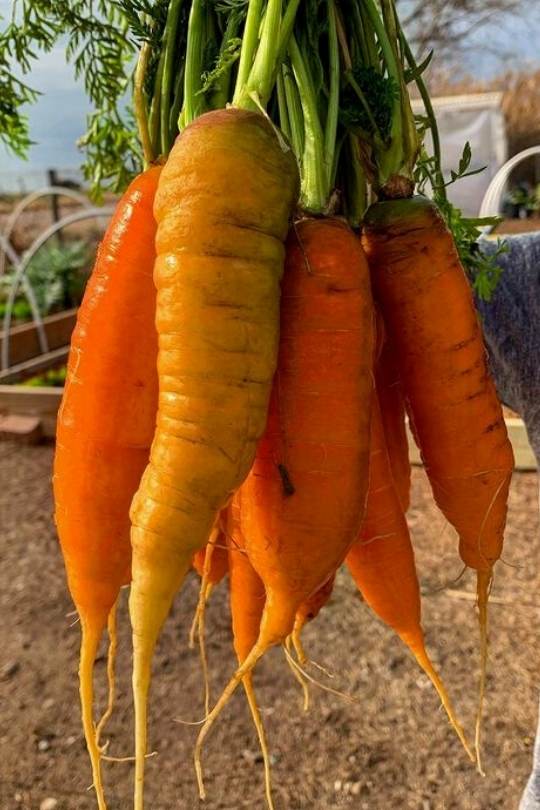
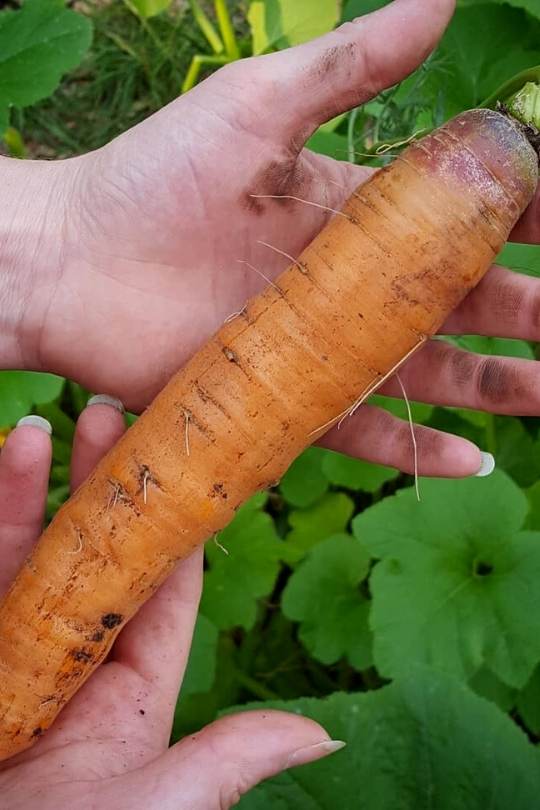
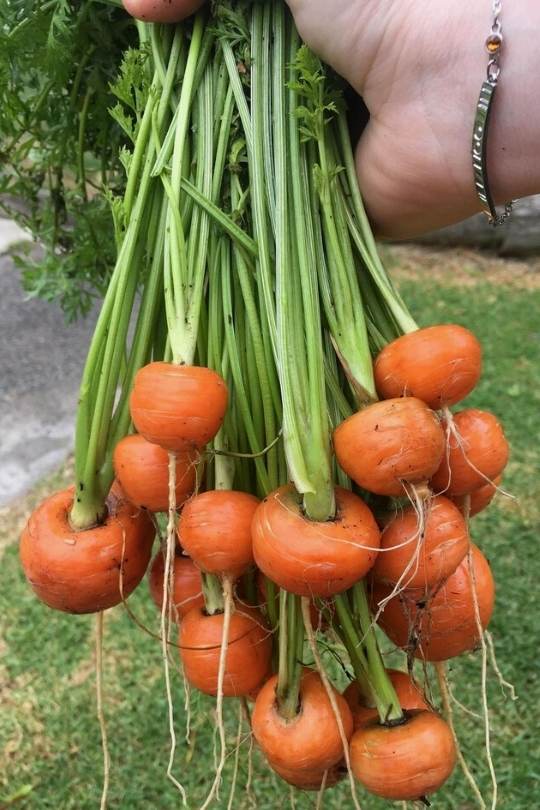
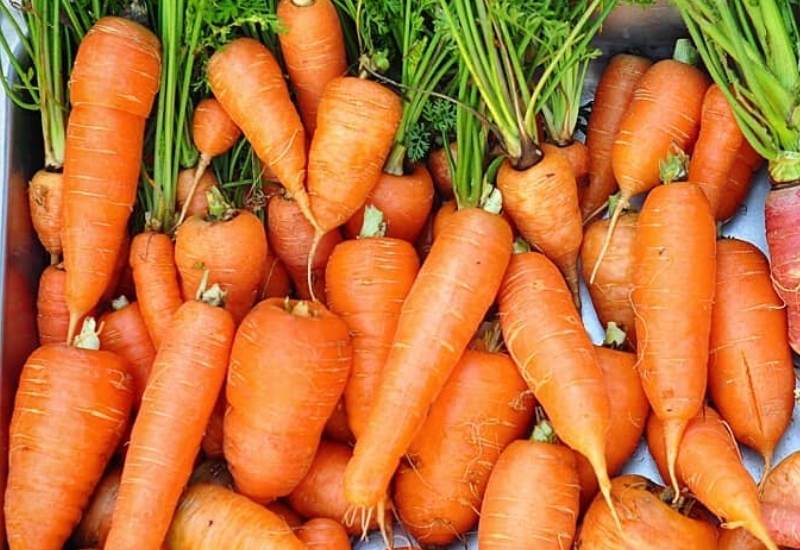
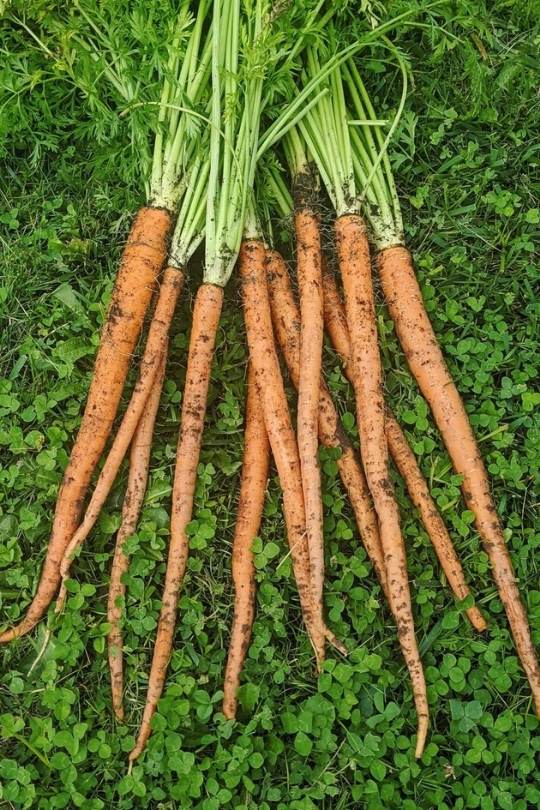
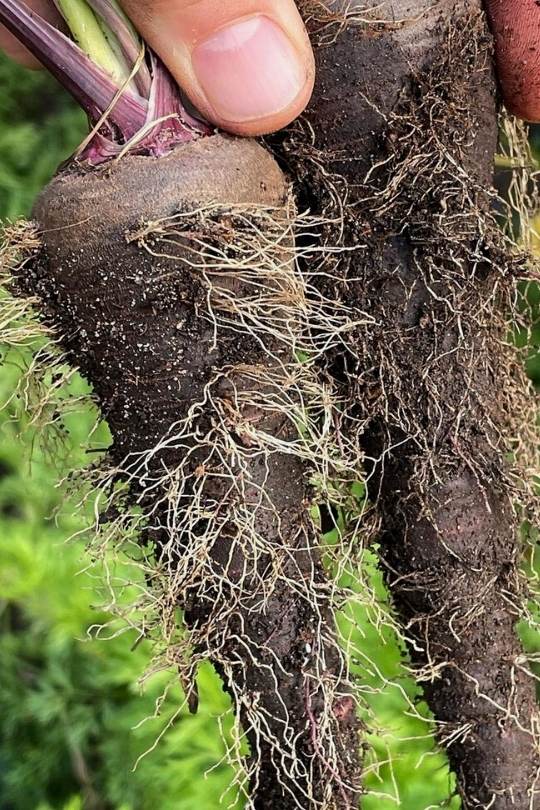
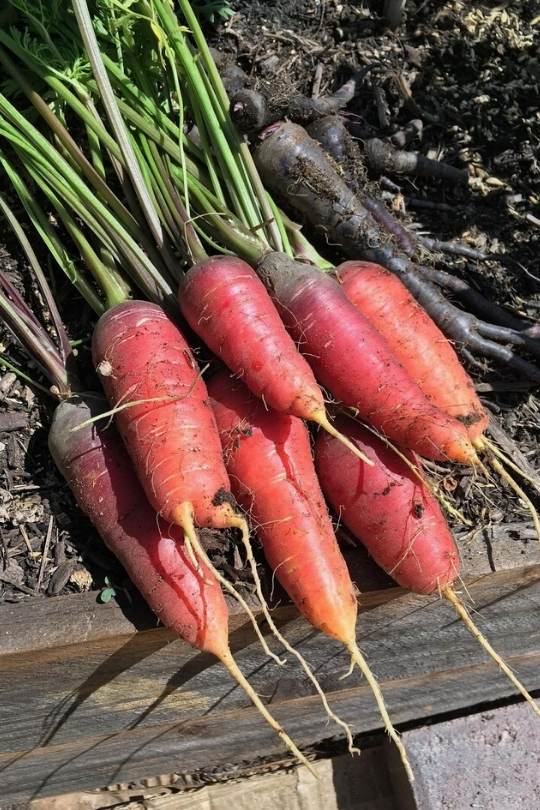
Am struggling trying to figure out early plants from weed. Can you give me tips to identify early leaves like celery, celeriac etc.